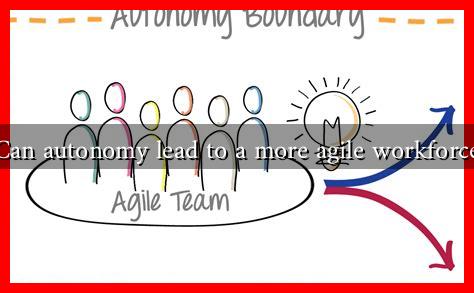-
Table of Contents
Can Autonomy Lead to a More Agile Workforce?
In today’s fast-paced business environment, organizations are constantly seeking ways to enhance their workforce’s agility. One of the most compelling strategies that has emerged is the concept of autonomy. But can granting employees more freedom and decision-making power truly lead to a more agile workforce? This article explores the relationship between autonomy and workforce agility, supported by research, case studies, and practical examples.
Understanding Workforce Agility
Workforce agility refers to an organization’s ability to quickly adapt to changes in the market, customer demands, and internal dynamics. An agile workforce is characterized by:
- Rapid response to change
- Collaboration across teams
- Continuous learning and improvement
- Empowerment and engagement of employees
In essence, an agile workforce can pivot quickly, innovate, and maintain a competitive edge. But how does autonomy fit into this picture?
The Role of Autonomy in Enhancing Agility
Autonomy in the workplace refers to the degree of freedom and independence employees have in their roles. When employees are given the authority to make decisions, they often feel more invested in their work, leading to increased motivation and productivity. Here are several ways autonomy can enhance workforce agility:
- Faster Decision-Making: When employees have the authority to make decisions, they can respond to challenges and opportunities more swiftly. For instance, companies like Zappos empower their customer service representatives to resolve issues without needing managerial approval, resulting in quicker resolutions and happier customers.
- Increased Innovation: Autonomy fosters a culture of innovation. Employees are more likely to experiment and propose new ideas when they feel trusted. Google’s “20% time” policy, which allows employees to spend a portion of their workweek on personal projects, has led to the creation of successful products like Gmail and Google News.
- Enhanced Employee Engagement: Autonomy contributes to higher job satisfaction and engagement. According to a Gallup study, organizations with high employee engagement see 21% higher profitability. Engaged employees are more likely to contribute to agile practices and adapt to changes.
- Improved Collaboration: Autonomy encourages cross-functional collaboration. When teams are empowered to make decisions, they can work together more effectively, breaking down silos and fostering a culture of shared responsibility.
Case Studies: Autonomy in Action
Several organizations have successfully implemented autonomy to enhance their agility:
- Spotify: The music streaming giant uses a squad model where small, autonomous teams (squads) operate like mini-startups. This structure allows for rapid development and iteration of features, enabling Spotify to stay ahead in a competitive market.
- W.L. Gore & Associates: Known for its innovative products like Gore-Tex, W.L. Gore operates with a flat organizational structure that promotes autonomy. Employees are encouraged to pursue projects they are passionate about, leading to groundbreaking innovations and a highly agile workforce.
Challenges of Implementing Autonomy
While the benefits of autonomy are clear, organizations must also navigate potential challenges:
- Risk of Misalignment: Without clear goals and communication, autonomous teams may pursue divergent paths that do not align with the organization’s overall strategy.
- Overwhelm and Decision Fatigue: Some employees may feel overwhelmed by the responsibility of making decisions, leading to stress and burnout.
- Need for Training: Employees may require training to effectively manage their autonomy and make informed decisions.
Conclusion: The Path to an Agile Workforce
In conclusion, autonomy can significantly contribute to a more agile workforce by fostering faster decision-making, innovation, employee engagement, and collaboration. However, organizations must be mindful of the challenges that come with implementing autonomy. By providing clear goals, support, and training, companies can harness the power of autonomy to create a dynamic and responsive workforce. As businesses continue to navigate an ever-changing landscape, embracing autonomy may be the key to achieving sustained agility and success.
For further reading on the impact of autonomy in the workplace, consider exploring resources from the Gallup Organization and their research on employee engagement and productivity.

